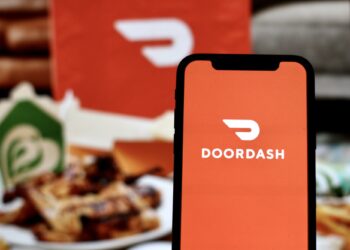The Gist
- Speed to launch ≠ success. Organizations often celebrate go-live dates without measuring real customer impact.
- Speed to value is strategic. Unlike time to value, speed to value is an organizational mindset focused on accelerating meaningful outcomes.
- Customer journey is the real clock. Progress should be measured by the customer’s experience of value—not internal milestones.
Across boardrooms and executive status meetings, there’s a familiar drumbeat: “Are we on track to launch?” It’s meant to instill accountability, keep teams aligned and show momentum. In fairness, the instinct is right — leaders need to deliver. But the scoreboard is wrong (or at least incomplete).
Speed to launch is activity. Speed to value is meaningful impact.
Too often, we celebrate the wrong finish line; cheering when the system goes live, not when it starts delivering measurable outcomes. We’ve all seen digital initiatives go live on schedule only to underwhelm post-launch. Why? Because velocity without value is just wasted motion.
Here’s what gets missed: value doesn’t happen at go-live. It happens when a customer actually benefits and decides your offering is worth their time and money. And that moment lives along the customer’s journey, which is quite different than your timeline. If that journey isn’t understood, mapped and measured — fast launches risk getting you to the wrong outcome faster.
In growth-minded organizations, speed isn’t measured in milestones hit. It’s measured in outcomes earned — by customers, by teams and by the business.
That’s speed to value. And it’s long overdue for the prime seat at the executive table.
Table of Contents
What Speed to Value Actually Means
Why Speed to Value Deserves a Seat at the Table
Let’s make an important distinction.
Time to Value (TTV) is a well-established metric. It measures the duration between a customer’s first meaningful interaction—like a kickoff, login, or first use—and the moment they experience a measurable outcome. That might be time saved, improved performance or accelerated revenue.
TTV isn’t new. Most mature CX and SaaS teams already track it for good reason. TTV helps you understand how quickly a customer exchange starts to feel worthwhile.
Speed to Value is something different.
It might sound like a rate, but in practice, it’s a strategic orientation. A mindset. A capability. A way of working across systems to accelerate meaningful outcomes.
That then raises a fair question: Can you measure Speed to Value?
In short, kind of. Speed to Value isn’t a standard metric. It doesn’t have benchmarks or defined units, so it’s not a KPI in the traditional sense.
But it can be operationalized. Organizations that focus on speed to value:
- Prove ROI sooner
- Earn faster buy-in across teams and customers
- Improve retention and expansion
- Create a more scalable and efficient growth model
Forrester research has shown a strong connection between shorter paths to value and higher Net Revenue Retention. But even without the data, it’s intuitive. When customers see results quickly, they stick around and they grow with you.
So, if the signals are there and the benefits are clear, why aren’t more organizations built this way?
Related Article: Customer Journey Mapping or Optimizing? Why the Answer Is Both
Why Most Orgs Miss Speed to Value
Most teams don’t ignore Speed to Value because they think it’s unimportant. They miss it because they’re simply not built to see it.
In many organizations, success is defined by what’s visible. Green checkmarks on project plans. Deadlines met. Dashboards filled with activity. It creates the appearance of progress even when value hasn’t landed. Roadmaps are mostly organized around delivery phases instead of customer outcomes.
And over time, these patterns get written into the institutional DNA. The default metrics start to shape the default mindset.
Sometimes, it’s just inertia.
Not a strategic decision, just a habit that never got questioned. The team reports on what they’ve always reported. The dashboard shows what the last leader wanted to see. The metrics persist, not because they’re useful, but because they’re familiar.
Dashboards aren’t the problem, but when they measure the wrong things, they divert focus. You end up optimizing for throughput instead of outcomes.
Even well-intentioned leaders fall into this trap because what gets measured feels like what matters. And when teams are focused on getting things done, it’s easy to overlook whether they’re doing the right things. What matters is often harder to measure.
The Visibility Problem With Traditional Metrics
Speed to Value requires a different kind of visibility; the kind that comes from mapping real inflection points in the customer journey, not just the internal handoffs between teams. And that shift isn’t easy. It means rethinking what progress looks like and how you prove it.
But the risk of not doing that? Spending months delivering something the customer never truly benefits from.
Metrics That Signal Speed to Value
Track What Customers Feel, Not Just What Teams Deliver
Speed to Value depends on visibility. That means identifying the key moments across the customer journey where value is felt and tracking how quickly and consistently your organization delivers on these moments.
A few signals worth watching:
- Time to First Value (TTFV). How long it takes for a customer to experience something useful. Not a task completed, but an outcome achieved.
- % of users successful in the first 30/60/90 days. Early success is where belief is built. If they don’t find value fast, they stop looking.
- Time lag between delivery and result. You launched the initiative. When did the customer feel the benefit? That gap tells you more than the go-live date ever will.
- Return visits. Simple but powerful. If they came back, something worked.
- Post-value usage and feedback. Don’t just track adoption at go-live. Track what happens after value is felt. That’s when habits form, trust builds and retention of value begins.
- Expansion tied to early outcomes. If value shows up early, growth tends to follow (but only if you’re ready for it). Have a roadmap to capitalize on early breakthroughs. Value isn’t just something you deliver; it’s something you scale. If it goes unrecognized or unleveraged, they wait. Or worse, they leave.
Key Metrics That Signal Speed to Value
Use these indicators to evaluate how quickly your organization is creating meaningful customer outcomes.
| Metric | Definition | Why It Matters |
|---|---|---|
| Time to First Value (TTFV) | Time from onboarding to first measurable customer benefit | Early wins build trust, reduce churn, and signal product-market fit |
| % Success in 30/60/90 Days | Proportion of users achieving value in early lifecycle windows | Indicates how fast users see results and form habits |
| Delivery-Result Time Lag | Time between internal completion and external impact | Helps identify friction between go-live and value realization |
| Return Visits | Customer re-engagement after first interaction | Demonstrates whether initial value drives continued use |
| Post-Value Usage & Feedback | Adoption and sentiment after meaningful value is delivered | Shows if users are deepening usage and spreading advocacy |
| Expansion from Early Outcomes | Revenue or product adoption directly tied to early wins | Signals scalable value and strategic growth readiness |
How CXOs Build for Speed to Value
Speed to Value has to be built in. It means changing how the organization defines progress, delivers outcomes and learns from what actually works.
Rethinking How Transformation Gets Done
Define the Outcome, Not Just the Project
It starts with clarity. Not on the checklist, but on the outcome. Too often, teams are handed a project and asked to execute without ever pausing to ask why. What should this actually accomplish for the customer? If that part isn’t clear, everything downstream is just movement without a compass in the world of customer experience.
Deliver Value Iteratively
From there, it’s about changing the rhythm of delivery. Large-scale rollouts delay value and concentrate risk. (It’s one reason Agile gained such traction in tech.) Smaller, focused releases do the opposite; they get something useful into the hands of the customer sooner and they give the team feedback while there’s still time to act on it. These quick wins build momentum, surface customer feedback earlier, and give teams confidence that they’re on the right track. Momentum doesn’t come from hitting a date. It comes from delivering something real and desired, then doing it again.
Prototyping becomes essential in a fast-changing environment. It gives teams a way to test ideas in the real world before scaling them.
Measure Impact Over Output
That shift has to show up in how teams are measured. If performance is judged by output—what got built, what got shipped—then that’s what people will focus on. But if the goal is value, then the organization has to be just as clear about what success looks like after delivery as it is before. If no one’s accountable for whether it worked, it usually won’t.
Reward Realized Value
Incentives shape behavior. If value is what matters, then value has to be what gets rewarded. Recognize the people who help customers succeed, not just the ones who complete the work.
Tighten the Feedback Loop
Feedback loops bridge the gap between activity and improvement. Speed to Value requires teams to quickly see how well what they delivered is working. Early signals don’t just show progress, they test whether the value is real and repeatable. That means capturing real outcomes, not just output. Without timely feedback, teams keep moving but don’t improve. With it, they iterate with purpose.
Make it Part of the Operating Model
None of this sticks unless it’s built into how you plan and operate. Speed to Value must show up in the roadmap, the metrics and the way teams reflect on work—not just in theory, but in practice.
Sustaining that mindset takes more than ambition. It takes resilience. Because delivering value isn’t a one-time win, it’s a habit. As Churchill once said, “Success is not final; failure is not fatal: it is the courage to continue that counts.” In that spirit, momentum is earned not by launching big, but by proving impact early and often.
Related Article: 3 Must-Follow Rules for Customer Feedback Before Launch
Proof Point: What Early Value Looks Like in the Wild
Real-World Example: Colorado’s Value-First Approach
Colorado Parks and Wildlife faced the kind of challenge many public institutions do: a sprawling legacy site, thousands of pages, dozens of contributors and limited tools to manage any of it efficiently. The result was slow updates, inconsistent information, and friction for users trying to access critical services.
Rather than chasing a perfect end-state, the team focused on unlocking value early. They prioritized improvements with immediate impact—streamlining navigation, introducing structured publishing workflows, and ensuring accessibility from the start. Those shifts didn’t just improve internal efficiency; they made the site easier to use in moments that mattered.
Shortly after launch, the real test arrived: Colorado’s annual Big Game Draw. The system handled over 837,000 license applications without failure or disruption. That resilience wasn’t accidental. It was the outcome of sequencing smart, foundational wins that delivered early value and scaled reliably under pressure.

Value Is the Only Speed That Matters
Speed Is Meaningless Without Meaningful Impact
Digital transformation isn’t a big bang. It’s a series of deliberate moves, each one designed to make things better for the customer, for the team, and for the business. You eat the elephant one bite at a time and every bite should create measurable value.
That’s what separates momentum from motion. Not how fast you launch, but how quickly you make an impact.
The most effective CXOs know this. They don’t just push teams to move faster, they build systems that deliver value sooner. And they measure success not by what gets shipped, but by what actually changes for the people they serve.
Because in the end, speed only matters if it gets you somewhere worth going.
Core Questions About Speed to Value in Customer Journeys
Editor’s note: Key questions surrounding speed to value and its role in customer experience, digital transformation, and business impact.
By reorienting goals around outcomes, tightening feedback loops, rewarding realized value, and making this mindset part of the operating model.
Metrics like Time to First Value, 30/60/90-day success rates, return visits and expansion linked to early wins offer strong visibility into performance.
Time to Value is a measurable interval; Speed to Value is a broader strategic mindset focused on accelerating outcomes, not just activity.
Because they default to measuring delivery milestones, not customer impact—missing key inflection points in the journey.
Learn how you can join our contributor community.





